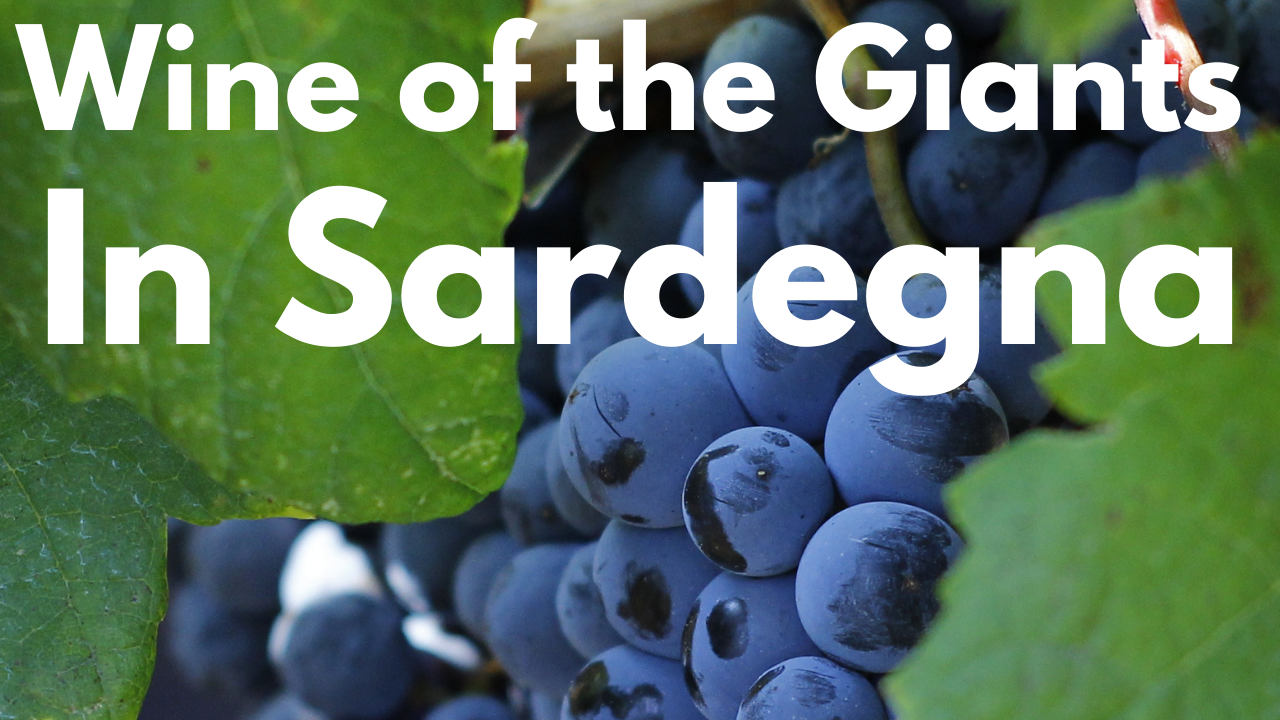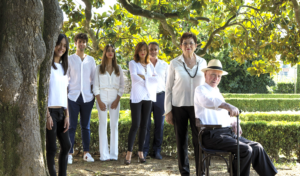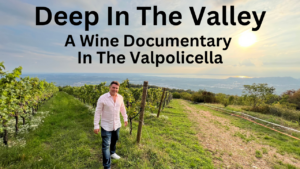It could become one of the most valuable wines in the Mediterranean.
Almost erased from history, it was Once used to honor the gods
Then mysteriously called The Spanish Grape
Then discovered to be An antioxidant elixir
A rare wine grape of epic proportions thrives in the village of Usini on the island of Sardegna.
Cagnulari is the coveted grape here and cultivated with great reverence.
The 4000 inhabitants of Usini are deeply rooted in their heritage and traditions. And yet, their most sacred wine comes from another country…from another time…and another culture… At least that’s what the wine intelligentsia has said for many years.
But the latest science tells a different story. And the surprising discoveries could break the backs of wine history as we know it.
So where does Cagnulari really come from? Why is it valuable? And what secrets can it tell us about human history?
So I set out on a mission to find out…
Sardegna Location
Sardegna is one of Italy’s 20 regions. It’s an island in the Mediterranean Sea with Corsica just to the north. Many peoples inhabited the island since at least the neolithic age, and then to the Nuragics, the Phoenicians, the Carthaginians, the Romans, the Aragonese, and so many others And each one claiming a piece to the puzzle of viticultural history in Sardegna.
Usini is a small town in Northwestern Sardegna and is part of an ancient wine area called the Coros.
Coros
The Coros was named after the Nuragic Tribe that inhabited the area over 3500 years ago. Today the coros is made up of 12 municipalities of which Usini is one of them. And out of all the villages of the Coros, Usini is the largest producer of wine and is respected locally as being a place of fine wine craftsmanship.
Usini
Usini has always been known for its agriculture and peasant history. Olive trees, artichokes, and wine grapes are the most planted agricultural products today.
The village is an ideal place for those seeking adventure into the wild part of Italy. It’s located about 20 kilometers from the Sea.
The center of the village has precious treasures of art and architecture with wine being among them.
The town center is made up of both fine architecture and centuries-old homes attached from one to the next.
Wine is such an important part of Usini, that winemaking cellars were built into people’s homes. Literally right at the entrance of the house, cementing wine culture forever as the centerpiece of daily life in Usini
Cagnulari
The local wine grape is Cagnulari. It’s fairly unknown outside of the island. It’s a fascinating wine that few people get to taste.
Cagnulari is anti-oxidant rich. According to a book called Vitigni di Sardegna by Gianni Nieddu, Cagnulari contains more anthocyanin and polyphenols than any other grape in Sardegna and it’s antioxidant levels may just turn out to be higher than any grape in the world. Cagnulari is an antioxidant elixir among wines.
This also explains the wine’s deep dark colors which are like looking at a bottomless ocean of red.
Cagnulari produces aromatic red wines that can be soft and elegant or big and bold depending on the style of the winemaker. The wine always has good structure because of it’s vivacious acidity and tannins.
While other parts of the island use Cagnulari as a blending grape, like the coastal city of Alghero which has it’s own DOC appellation, the Usini wine culture makes single varietal wines with 100% Cagnulari so you can taste the essence of this profound grape.
There are only 9 winemakers in Usini and they prefer to use Italy’s IGT classification which gives winemaker’s more flexibility to make the wine as they wish. The IGT appellation is called Isola dei Nuraghi or Island of the Nuragics which pays homage to the most important civilization in Sardinian history. This is controversial because for many years experts have called Cagnulari, The Spanish Grape.
The classical theory is that the Aragonese people of Spain brought Cagnulari to Sardegna during the conquest that began in the year 1323. The reason the wine community believed this was because there’s a grape in Spain today called Graciano that is genetically similar to Cagnulari. That’s why it was called the Spanish grape.
But I felt there was more to the story.
I arrived in Usini on a beautiful blue sky day in September during the harvest, a crucial time that affects the resulting wine in your glass.
I asked many of the locals in the area about who makes the best Cagnulari. And one person’s name came up multiple times. His name is Francesco Fiori.
So I decided to pay him a visit.
I arrived at his micro-winery. There were no signs guiding me there like you’d find in a touristic wine region. Instead a couple humble signs with his name on the entrance; one and old and one new.
Francesco was in the middle of the harvest that day and there was no time to waste so he immediately took me to the countryside to see the vineyards.
A native of Usini, Franceso Fiori has dedicated his life to Cagnulari. It’s remarkable considering the fact that this wine is virtually unknown to the international wine scene.
Francesco is a humble man with a warm personality. As soon as you meet him, it’s like you’re with an old friend you’ve known for years.
He took me on the backroads of eternity through the rugged terrain of Usini. They were rough and rocky with no sign of civilization in sight. The landscapes were sculpted by vineyards and grain fields and seemed to ignore our concept of time.
The old stone walls that separated the vineyards weren’t there to draw borderlines of ownership. Francesco told me it was an old trick to keep the animals away so they wouldn’t eat the grapes.
While I was at one of the vineyards I heard hundreds of bells ringing from the distance and when I turned around I saw a pack of sheep strolling on the same roads we came in on. The old world was alive and well in Usini.
We arrived at the first vineyard right in the middle of the harvest. As you can see every cluster is harvested with just scissors and hands. No machinery in the vineyard. I got to taste a Cagnulari grape and I have to tell you it already tasted like wine.
Francesco wanted to show me that the juice inside Cagnulari was already red as soon as he squeezed it. When you squeeze the juice out of most red wine grapes, the juice is white until it macerates on the skin. This is an ancient characteristic that gives a clue to how long Cagnulari has existed. It’s also further proof pointing to the rich antixidant content of the grape.
Cagnulari Meaning (while traveling the roads)
Another mystery I wanted to find the answer to was, what does the word Cagnulari mean? I thought that if there was an answer that it might reveal the story about where this grape came from. So I started my research with the 4 main languages of Sardegna to see if I could find a clue.
It turns out The name Cagnulari has other synonyms like Caldareddu which means “hot” and comes from the neighboring Gallurese language not too far from Usini and Gallura happens to be one of the oldest winemaking areas on the island. So that made some sense.
And that lines up with Calidum in Latin or Caldo in Italian all meaning “hot,” which could all be references to this sunbathing grape.
That was a good start. But here’s where things got interesting.
I found an old dictionary from the Sassarese language where Cagnulari is actually two words put together.
When you split Cagnulari in half, you get two completely distinct words in Sassarese. Kanu and Laru
Cagnu or “Kanu” means “to treat delicately and honor” which is a reference to the gods of prehistorical Sardegna and “laru” means “twig,” which is a reference to the grape stem or vine.
Kanu-laru evolved into Cagnulari. And when you put them together Cagnulari means “delicate vine that honors the gods.” The ancient meaning of Cagnulari suggests it predated Christianity, long before the Romans could have brought it to the island. Since the Romans arrived in Sardegna around 2000 years ago that would also cancel The Spanish Grape Theory since the Aragonese arrived a thousand years after the Romans.
And with Usini being part of the provincial territory of Sassari with a history of speaking sassarese, the chance that Cagnulari originates from this area becomes all the more real.
Serra Juales
70 years ago, Francesco’s parents rented this small parcel of land from a wealthy landowner and with hard work and sacrifice were able to purchase it. Francesco’s father knew the land was rich with potential. And he had the foresight to plant a vineyard here with Cagnulari vines in the 1950’s. This was a time when Cagnulari was completely unheard of outside of the Coros. Today those old vines are producing some of the finest Cagnulari grapes in Sardegna. The vineyard was named after the hill where the vineyard finds itself and its called Serra Juales.
Serra Juales is an interesting name. Serra refers to the Spanish word Sierra or Evening which takes us back to the classical Spanish grape theory again. Juales is the local Sardinian word of the area referring to the harness that the oxen wore to help till the soils in the fields..You can still find oxen tilling the soil today in some small vineyards.
The Cagnulari for this vineyard grow on ancient alberello which means “little tree” referring to the low height of the vines around 3 feet tall. When we got to the vineyard that day, the harvest had already been completed. And the skeleton of the alberello vines were bare naked for us to see. The Serra Juales vineyard contains the original vines planted by Francesco’s father in the 1950’s. The grapes mature faster because of the slope and the angle of sun exposure it enjoys.
The grapes are hand harvested in September when they reach perfect phenolic maturity. Then the grapes are given a cool soft press the same day to capture the freshness of Cagnulari. The wine is made with it’s own native yeast as well as spontaneous fermentation just like in ancient times.
It ages in steel vats for about year followed by rest in the bottles before being released to the public.
Serra Juales takes time to breath and open up. And when it does the wine is bold with a refined rusticity, with vibrant blackberry notes, light spices, leather, earthy minerality, sandy tannins that stimulate the senses, and a dry finish that makes a statement. It’s like the veins of the old world flow it’s blood through this ancient wine. Just 6,000 bottles are made annually to ensure the utmost quality and authenticity.
More Cagnulari History
Wild Vines
As mentioned earlier, DNA studies have shown that Cagnulari is genetically similar to a grape called Graciano which is grown in the Rioja of Spain with 19 of 24 alleles in common. This further gave credence to the Spanish Grape theory that Cagnulari was brought to Sardegna during the Aragonese conquest in the 1300’s.
But recent studies have found an even stronger genetic relationship between Cagnulari and Bovale Sardo with 23 out of 24 alleles in common. That’s why the wine intelligentsia also claim that Bovale was brought to sardegna from Spain.
However, ancient grape seeds of Bovale have been found in archeological sites all over the island which are over 3000 years old proving Boval is indigenous to Sardegna. This finding debunks the classical theory from another angle.
It was further debunked when Gianni Lovicu, an agricultural research scientist proved that Bovale came from wild vines.
There are few places in the world where wild vines can be directly connected with today’s domesticated vines…and Sardegna is one of them. In fact, Sardegna is now the best place in the world to study how and when wild vines were domesticated because the island is still flourishing with wild vines today.
Bovale is not only the ancestral grape of Sardegna but likely the oldest domesticated vine in the Mediterrean and perhaps the world.
And Cagnulari is as close as you can get genetically to Bovale.
This leads us to believe that Cagnulari also comes from wild vines and that the Nuragics domesticated this grape well over 3,500 years ago.
S’Elighe Entosu
But there’s a discovery waiting that will change the wine history books forever. Recent archaeological finds in the necropolis of “S’Elighe Entosu” also known as the Seven Tombs of the Giants, in the Municipality of Usini, have revealed the presence of oenological activities. Remains of charred wood fragments were analyzed and the discovery was revealing. The wood fragments were Burnt twigs used for fire-making. What’s interesting is that those twigs were grape stems. But here’s the really surprising discovery: the specimens revealed the grape stems are part of the Vitis Vinifera species from which 99% of all our wines come from.
This might be the most significant discovery of all because Vitis Vinifera is now considered indigenous in Sardegna, so much so as to suggest that the populations that arrived later did not bring the stump or the seed, but instead they brought the art of grafting, cultivation, and the techniques of producing and storing wine.
Based on this finding at S’Elighe Entosu Winemaking was already happening in pre-nuragic times over 5,000 years ago and they were using Vitis Vinifera grapes.
From S’Elighe Entosu to the finding of wild Bovale tells a wine story very different from mainstream wine theories.
And The story of Cangulari is a lost chapter in this grander story of origin wine in Sardegna.
Nebriosu
We arrived at the Nebriosu single vineyard where the grapes are used to make Francesco’s Cagnulari Reserve. Nebriosu means Nervous in local Sardinian. The story behind the name is that Cagnulari needs to be cultivated with great care because it behaves differently than the international varietals. For example the canopy leaves shouldn’t be removed until the ending stages of grape maturation to manage proper sugar and acidity levels.
Just like Serra Juales the grapes are hand-harvested from a natural vineyard where no chemicals of any kind are allowed.
Francesco personally presses the grapes by hand to personalize his wine. By controlling the press in this way, he captures the ancient exotic flavors, aromas, and textures just the way he likes it.
Nebriosu is made from spontaneous fermentation using its own native yeasts and aged in a single oak barrel for at least 1 year. The wine rests in bottle until it’s ready for drinking and that’s when the wine is released. Usually 4 years after the harvest.
After decanting for 3 hours, the wine has explosive perfumes that smell like Mediterranean shrubbery that you’ll notice walking on the naturescqu hills of the island as well as mediterreans red cherries called Marasca. These mouthwatering perfumes could only come from usini and they can’t be duplicated. The wine houses a huge structure and heavily concentrated with exotic forest berries. The finish is long, determined, and unwavering like the history and people of Sarde gna. Nebriousu paints a picture of a place and time before the written word and takes you on a liquid journey Tasting the ancient fruits of prehistory. A very limited 2,400 bottles are handcrafted annually.
The Gods and Revelations
Kanu-laru, the delicate vine that honors the gods, is a name that tells a story from the ancient past. Cagnulari’s ancient name implies the wine was used in spiritual rituals to honor the deities of prehistoric cultures. But on a deeper level, these rituals were really just celebrations of life. Today we use wine as a token of celebration and this cultural practice can be traced back to the origins of wine. Offering a toast, giving a gift, or saving a special wine are all moments of joy and thanks. And as we continue to unravel the mystery of Cagnulari, this rare wine reveals to us, a timeless symbol of human celebration. It’s wisdom takes us away from technology and brings us back to earth where life’s simples pleasures are all we truly need.
Revelations
Cagnulari is native to Sardegna
It was domesticated from wild vines by the Nuragics
It was used to worship their gods and used in rituals
Viti vinifera may have it’s own origins on the island of Sardegna
Sardegna is the oldest wine culture in the Mediterranean, and the bigger question is, Could wine have originated from this mysterious island?
How ancient people lived and what we can learn from them. Even it means taking us away from technology and bringing us back to earth where life’s simple pleasures are all that we truly need.
-Tony Margiotta





